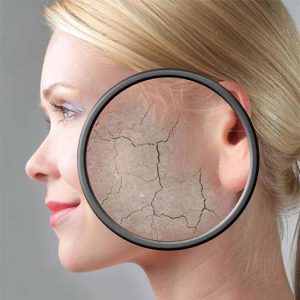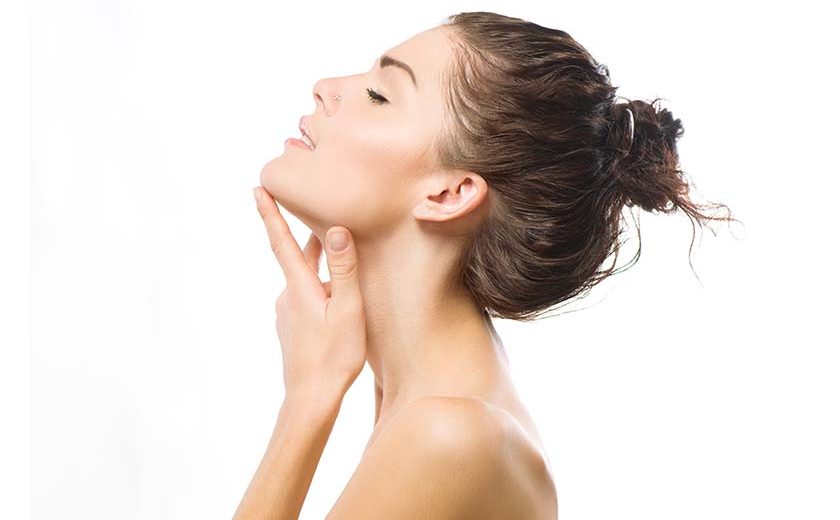Do you feel as if there are times your skin just doesn’t seem to cooperate with you, no matter how much TLC you give it? Breakouts, oily slick, puffy eyes, wrinkles that weren’t that visible yesterday – why, oh why?
Search the internet and you’ll sure find a promising solution, or should we say, a hundred different solutions. Most times, they never work. Could it be your skin is trying to tell you something? If it is, find out what.
Adult Acne: Hormones May Have Gone Awry
What caused your acne as a teen isn’t necessarily what’s behind your breakouts now — and that’s important to know when choosing a treatment. As a teen, acne may have been due to excess oil production, but now as you age, it’s often hormonal. Hormonal acne, especially in women, often worsens with the menstrual cycle. The acne bumps usually pop up closer to your jawline and chin, as opposed to the acne that might’ve plagued you in your teen years, which is often localized to the face and forehead.
Hormonal acne often looks more inflammatory in nature (think deep and red), so the treatment is all about calming skin. Look for topical benzoyl peroxide, which targets Cutibacterium acnes, the bacteria that causes acne, as noted an article published in March 2019 in the journal Dermatology Times. If you have sensitive skin, products containing sulfur or willow bark can also help clear skin. Ultimately, your gynecologist and dermatologist can work closely together to regulate a disruptive hormonal cycle for clearer skin.
Aging Before Your Time? Your Skin Cells Are Not Renewing Well
You need something that stimulates collagen and speeds the turnover of skin cells, says Neil Sadick, MD, a dermatologist in New York City and clinical professor of dermatology at Weill Cornell Medical College. “Retinoids are still the No. 1 collagen stimulator,” he says.
Weaker forms of retinoids called retinols can be found over the counter, while most retinoids are prescription; ask your doctor what they’d recommend for you.
You’ll also want an alpha hydroxy acid (AHA) serum for cell turnover; ideally, start with one that contains 5 percent AHA, and work up to greater concentrations as long as is tolerable. Alternate between the two in your nightly routine. It also should go without saying that you need to be diligent with good sun protection to help slow premature aging, including using a broad-spectrum SPF 30 daily, wearing a wide-brimmed hat when out in the sun, sporting wraparound sunglasses, and seeking shade when possible.

Burning, Stinging Skin: Your Skin Barrier Has Been Compromised
It’s crucial to rebuild that barrier. Use a gentle, non-irritating face wash and moisturizer to hydrate. “Once the barrier is repaired, skin won’t be as prone to burning or stinging, and many people find they can tolerate a greater range of products. Also look for products that contain niacinamide, an anti-inflammatory ingredient that can quell touchy complexions, past research suggests. While you tackle redness, you can also use cosmetics with a green tint, a color that neutralizes redness and can help give the appearance of more evenly toned skin.
Undereye Bags: There May Be A Few Reasons Why
Get to the source of the problem. Allergies, smoking, and even eating too much salt can play a role in giving you bags under your eyes, but lack of sleep is still the biggest culprit behind that look. If you often have eyes bags, you may have to work on sleep habits or prioritizing shut-eye.
Beyond that, there are a slew of remedies that can deflate those bags. Reach for eye creams that have a metal-tip applicator. These supply a cooling surface (think chilled cucumber slices) that depuff. If you need some extra coverage after a restless night, that’s what a good concealer is for. Use it!
 Dry, Cracked Skin Is Skin That’s Thirsty
Dry, Cracked Skin Is Skin That’s Thirsty
As you age, skin begins to lose some of its moisture, and to make things worse, a dehydrated dermis is more likely to show signs of aging, like fine lines and wrinkles. Nonetheless, rethink your tendency to grab the thickest moisturizer you can find, which can clog pores to cause acne breakouts. So, while it may seem counterintuitive, you want to grab a lightweight moisturizer that has more of a liquid consistency, and reapply as needed – just as you would drink water several times a day, whenever you’re thirsty.
Flushed Skin And Visible Blood Vessels: Signs Of Rosacea
Rosacea, is quite a chronic, yet common skin condition. If you suspect you have it — your cheeks, nose, chin, or forehead are persistently red or you notice small visible blood vessels — see a dermatologist.The sooner you can treat it the better. You may have to make some lifestyle changes as part of the treatment, to avoid triggers. Stress, over-exposure to the sun’s rays, as well as chemicals and fragrances in skincare products are the main culprits, and dealing with Rosacea means having to do away with all of these.
Dark Undereye Circles: Is It Lack Of Sleep? Perhap, And Perhaps Not
Yes, you could be lacking of sleep if you have dark undereye circles, but at the same time, genetics play a big role in undereye circles, and that’s just something that’s out of your control. Still, you can help diminish discoloration with eye creams that contain brightening antioxidants, like vitamin C and vitamin E. If circles look more blue-grey, the issue may be that blood vessels are showing through the thin undereye skin. In that case, a product containing caffeine “can help collapse the blood vessels to lessen the appearance of darkness.
Dark Spots? That’s The Ghost Of Past Sun Damage!
Whatever you do, do not ever neglect your sun protection routine, all over – face, neck, limbs, etc. Look for products containing licorice extract, azelaic acid, niacinamide, or arbutin, ingredients that are known for their brightening properties. The trick is to apply your sun protection product religiously after each shower/bath, and reapply often if you’re out and about in the day time. With any luck, you may be able to halt further sun damage and even help improve your present skin condition.
www.everydayhealth.com


